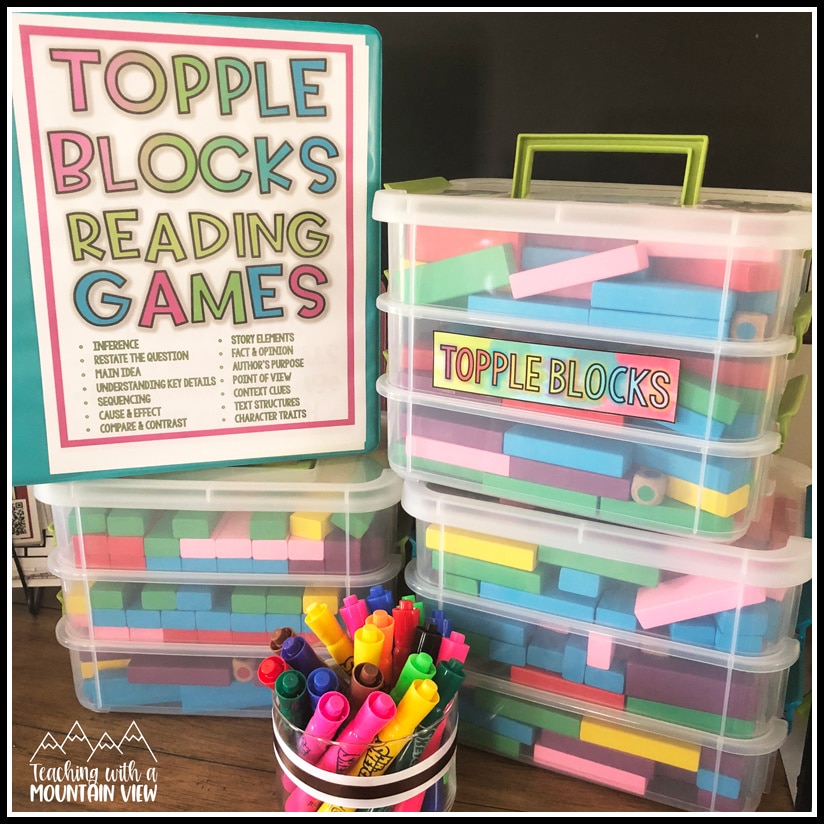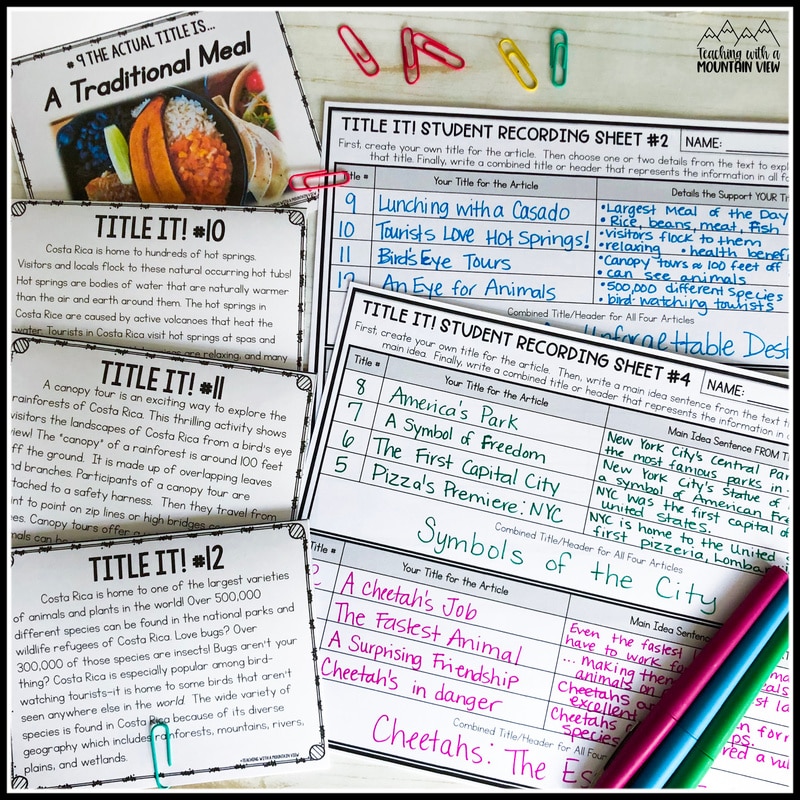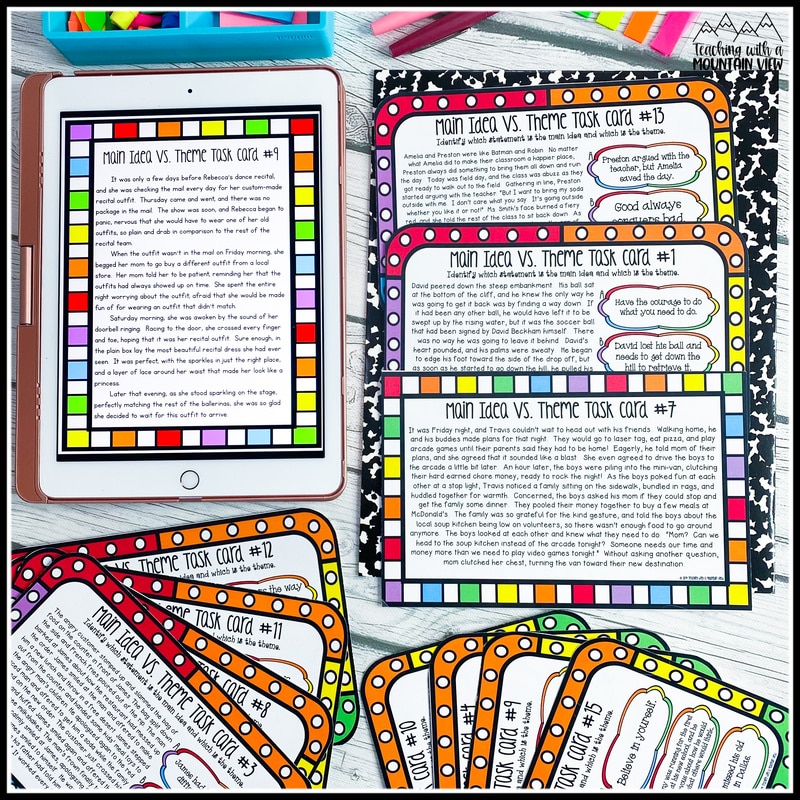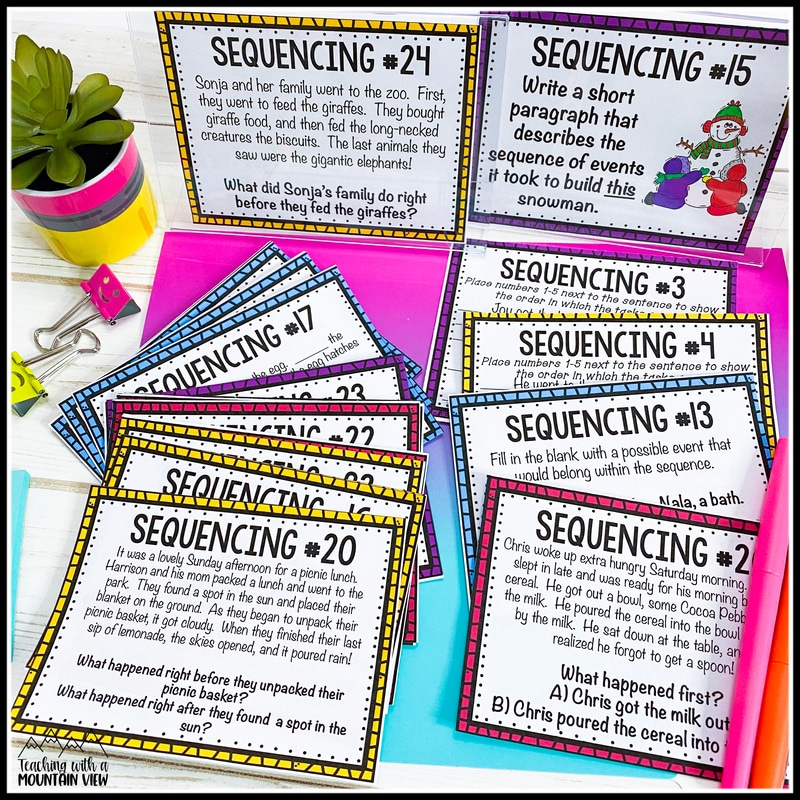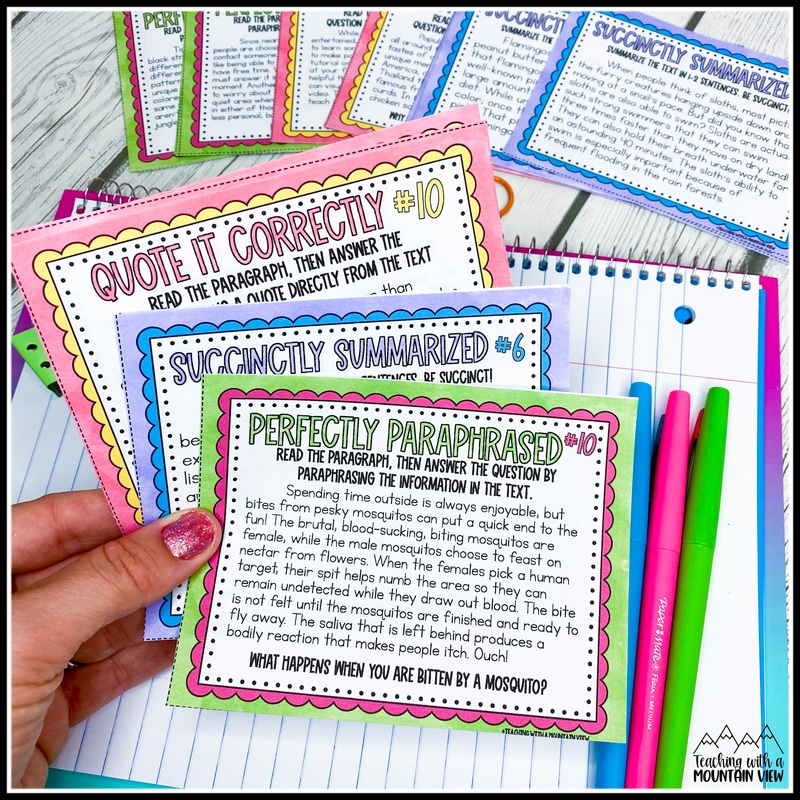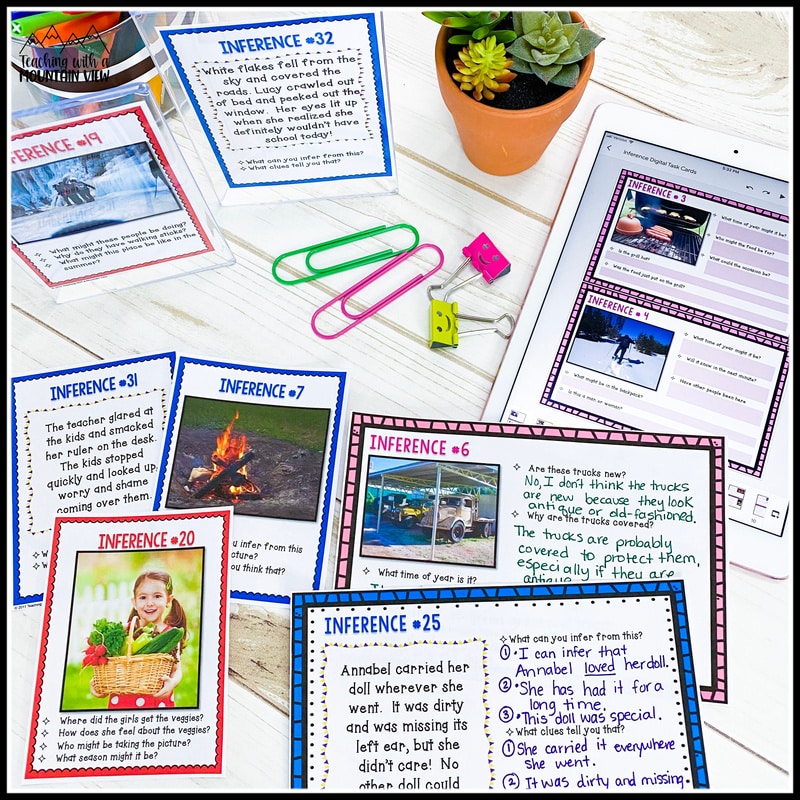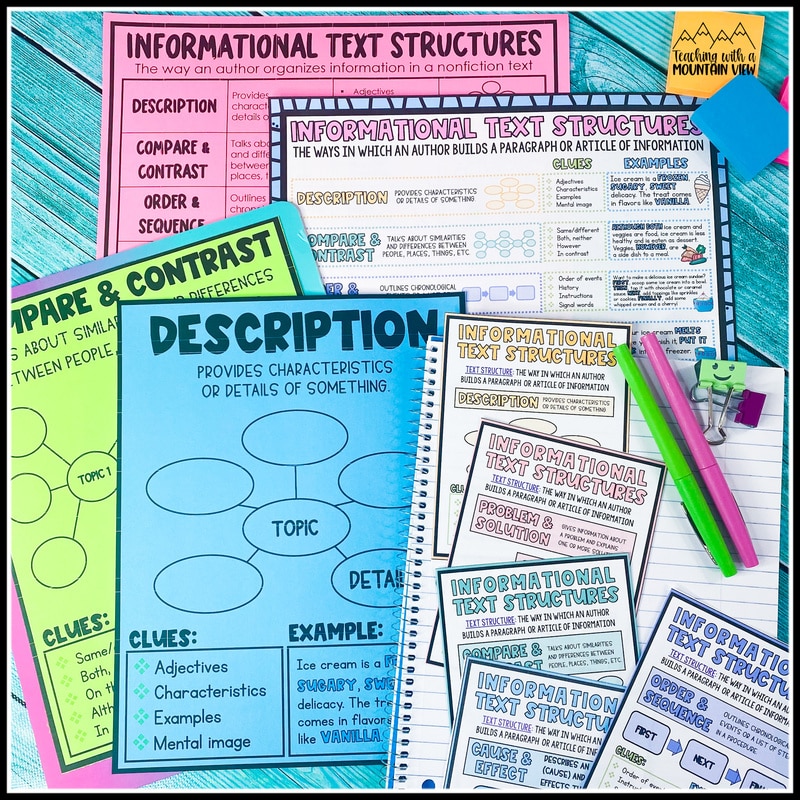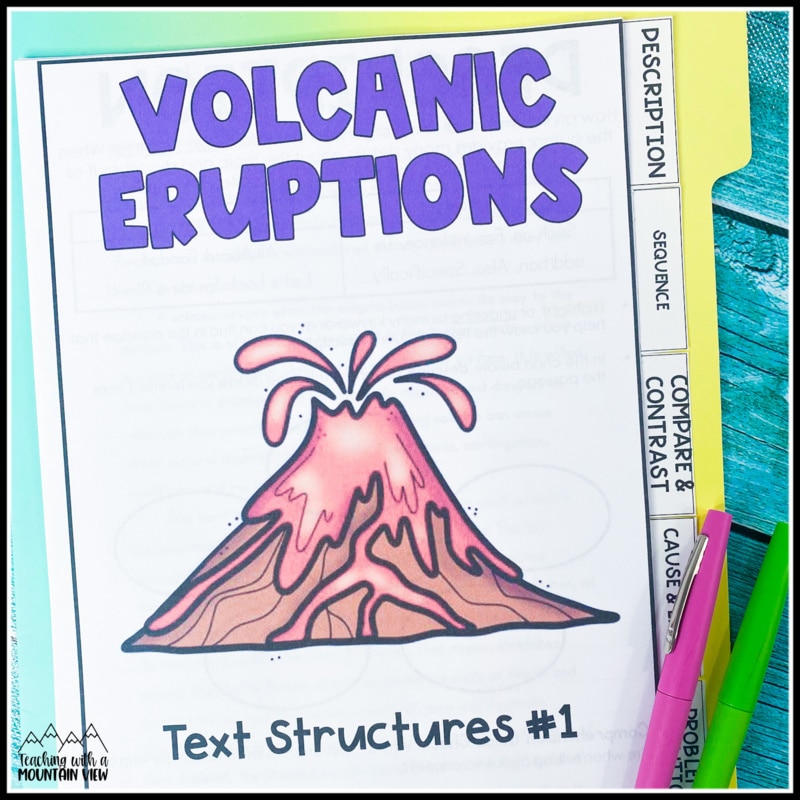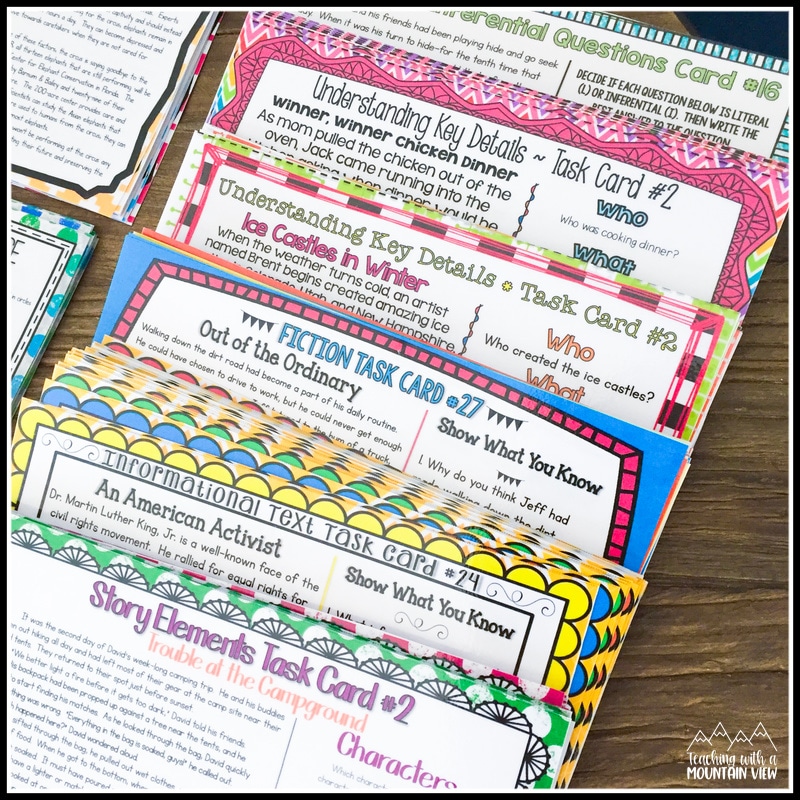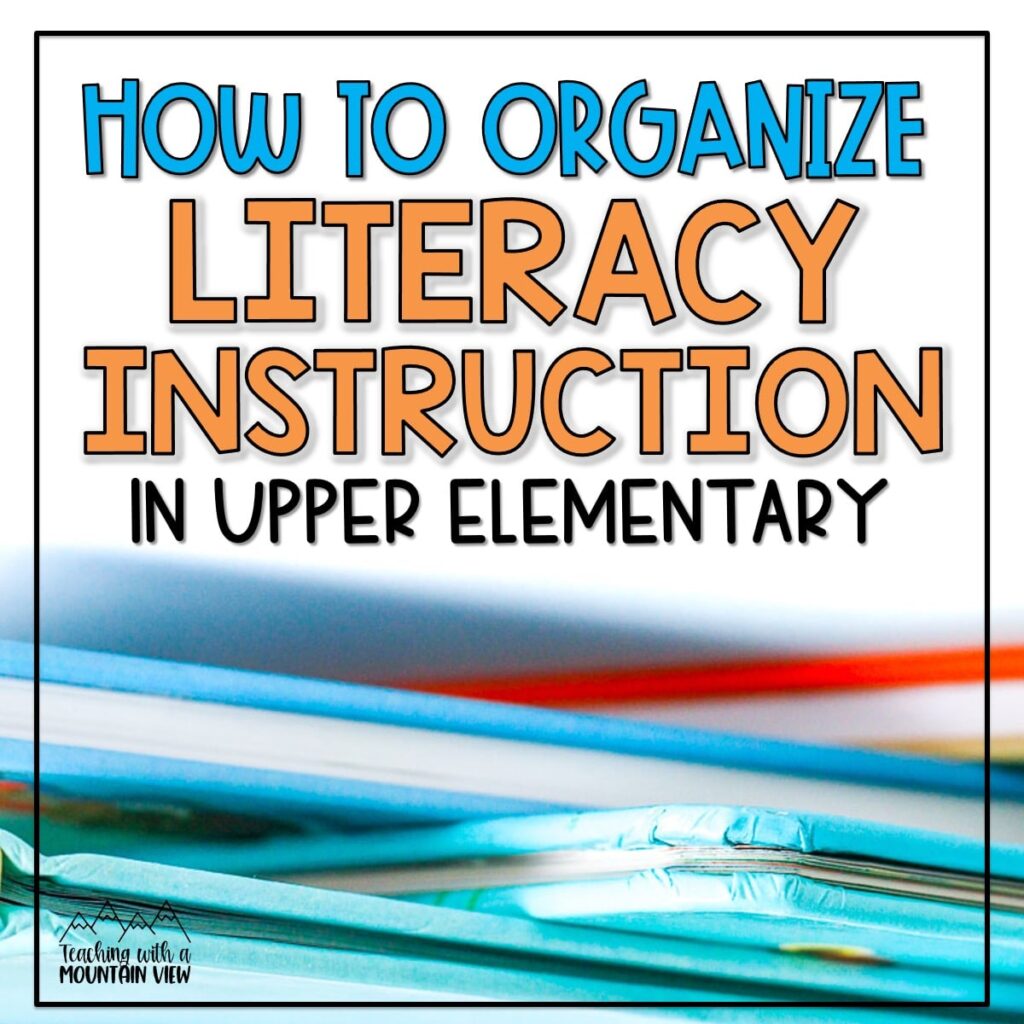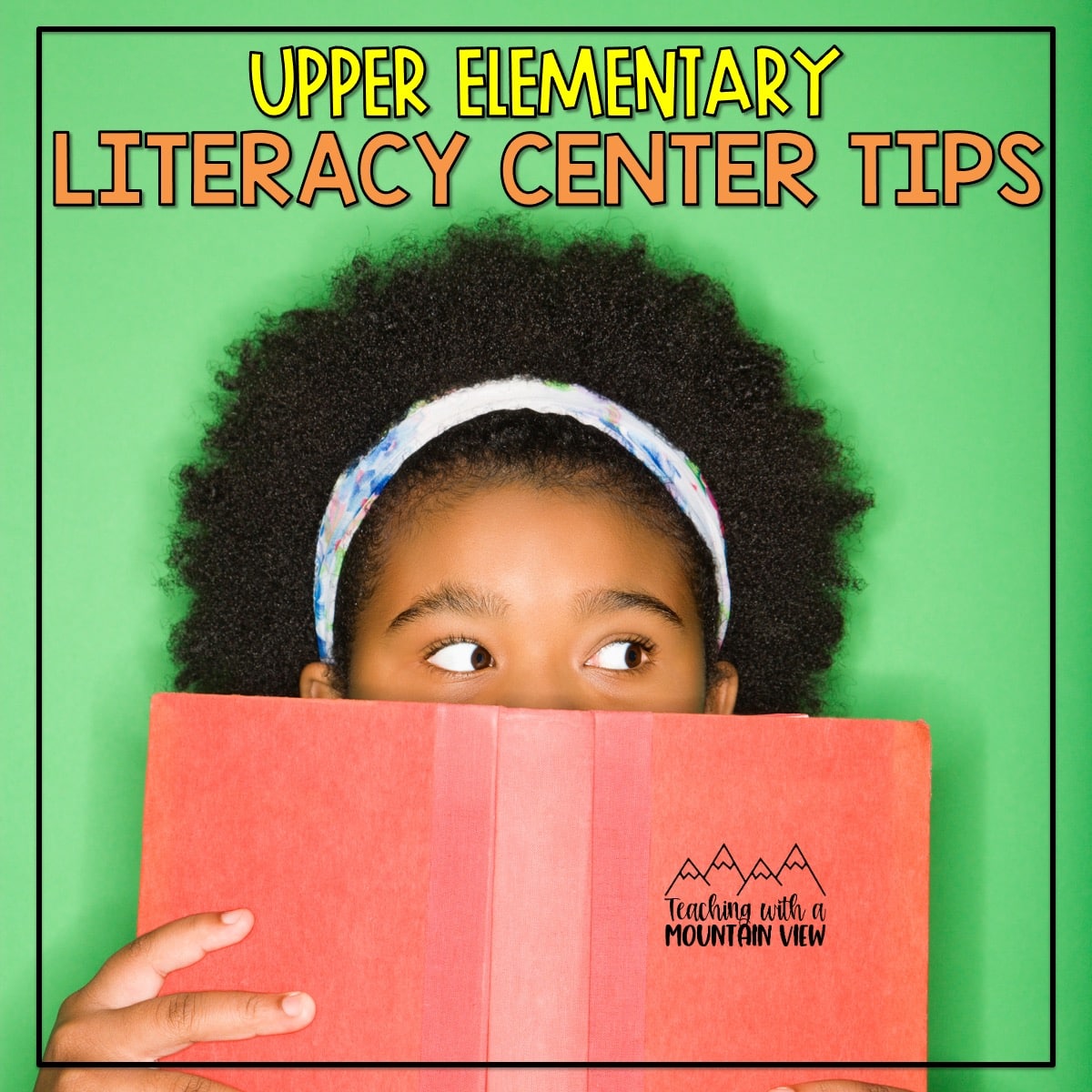
Reading centers, literacy centers, reading stations… whatever your school calls them, they are often overlooked tools in the upper elementary classroom. However, reading centers are an integral and successful part of my literacy instruction. In fact, I’d dare to say my students wouldn’t build their reading and writing skills as well without them because literacy centers provide many benefits in intermediate grades to both students and teachers.
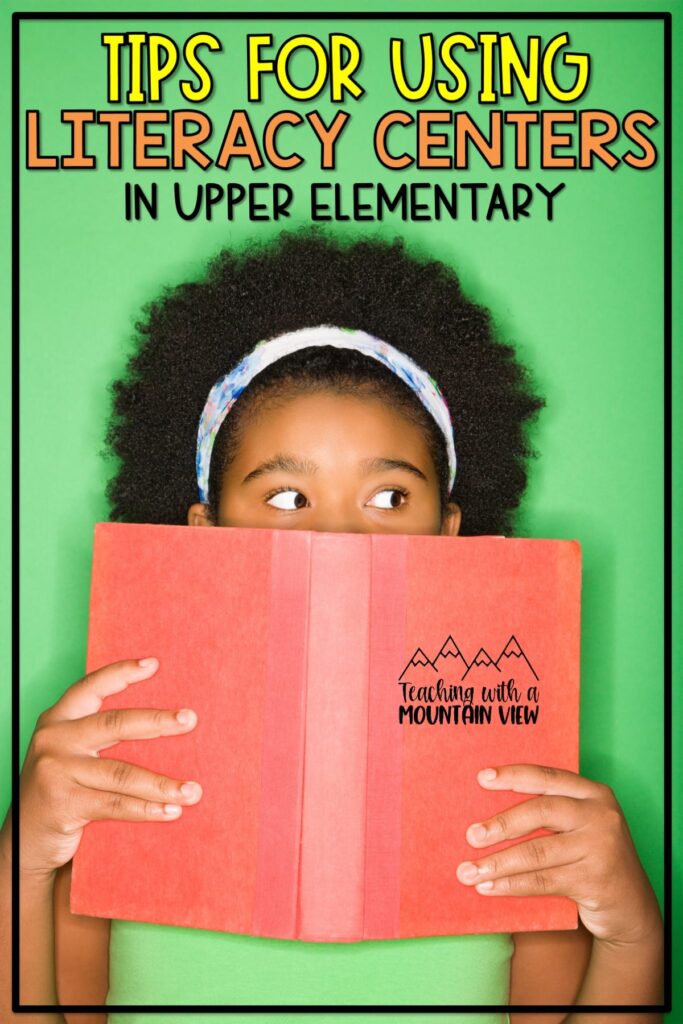
Sometimes I hear other teachers say centers or stations feel primary, so I am here to convince you otherwise and offer tips on how to implement them in your classroom. If you’re brand new to literacy centers in upper elementary, I also have this post all about how I organized my literacy centers for more tips!
Benefits to Literacy Centers
Differentiation
There are many reasons I like literacy centers, but the number one reason is the ability to meet with students one on one or in small groups for targeted instruction. One of my reading stations is always a teacher-led station. This gives me the chance to help students through a skill they are struggling with or challenge students who are mastering concepts. It’s rare that the activities in stations are the same for all of my students, and I focus heavily on using differentiated texts and skills while I’m meeting with students.
Independence
Another reason I love literacy centers is that it puts students in charge of their learning and allows for greater choice. As teachers, we get worried about “spoon feeding” our students different skills, and centers are a great way to combat that. It fosters independence. Students who use center time to self-monitor during independent reading (IF you include this), writing or word work will be better-prepared for the increased independent work of middle school and beyond.
As students mature, they want more freedom. Center time allows these students some autonomy as they practice their reading and writing. Whether they are choosing what they read, where they read it, how they read it, or what they are doing to interact with the text, a little choice goes a long way towards student engagement.
Important Note: This does not mean that we should be allowing full choice of reading materials all the time. We know how important it is to target phonics skills, morphology, etc. even in the upper grades, but that’s for another post!
Collaboration
Lastly, I love the social aspect. Students are able to help each other through challenging concepts, and explain to others in their group how to complete assignments. I definitely believe that saying, “If you can teach it to someone else, you really know it.” What better way to reinforce that?
Literacy centers may also include games, which provide an excellent chance to practice social skills. Compromising, working out disagreements, and negotiating are all skills that transfer to all aspects of life, both in and out of school. This Topple Blocks Reading Games Bundle will have you set for the year!
Novelty
Most of us love novelty, and that is another one of many things literacy centers provide. Students of all ages respond well to the new setting, materials, and activities found in literacy centers. Few of us would like to remain in the same seat for several consecutive hours. When students are actively engaged in literacy centers and changing positions, they get a built- in movement break too.
Tips for Managing Reading Centers
One of the biggest reasons teachers say they don’t like centers and stations is the management aspect, and I totally get that. We are placing trust that our students can get work done independently, and sometimes they just can’t stay on task.
I have a couple tips to help make managing stations easier:
Expectations
Like many things in the classroom, we want to make sure we have solid expectations in place before we send out students to centers. Create a few days of stations where the focus is to mainly practice expectations, transition quickly, and remain on task in independent groups. I talk about this extensively in my FREE first week of school plans. It’s so important to build those expectations!
You may want to have visual cues in place. For instance, I’ve seen teachers wear a fun headband or place a sign on their table when their teacher-group is in session. This lets students know it’s not time to interrupt, but ask a neighbor instead (unless it’s an emergency).
Consistent Routine
I recommend having a consistent routine for centers. For instance, you may have a teacher center, novel study center, task card center, word work center, and writing centers. Decide on the consistent format you want to use, but you can always switch what centers you are doing each day.
Not only can you vary which centers you’re doing, but you can (and should) vary the content. Instead of always answering task cards on a worksheet, add a fun game. Instead of always doing a reader’s response, ask students to record a summary or create a book jacket. Keep the routine consistent and the activities fresh.
Early Finishers
Be prepared that you will have students finish early in their centers. Make sure you have something ready for them to do, because if not, they will likely become a distraction. I personally love using this creative and critical thinking journal or these creative thinking task card activities to entertain my early finishers with something educational. Also have a plan for students who consistently DO NOT finish their work in centers. When will they finish (if they will)?
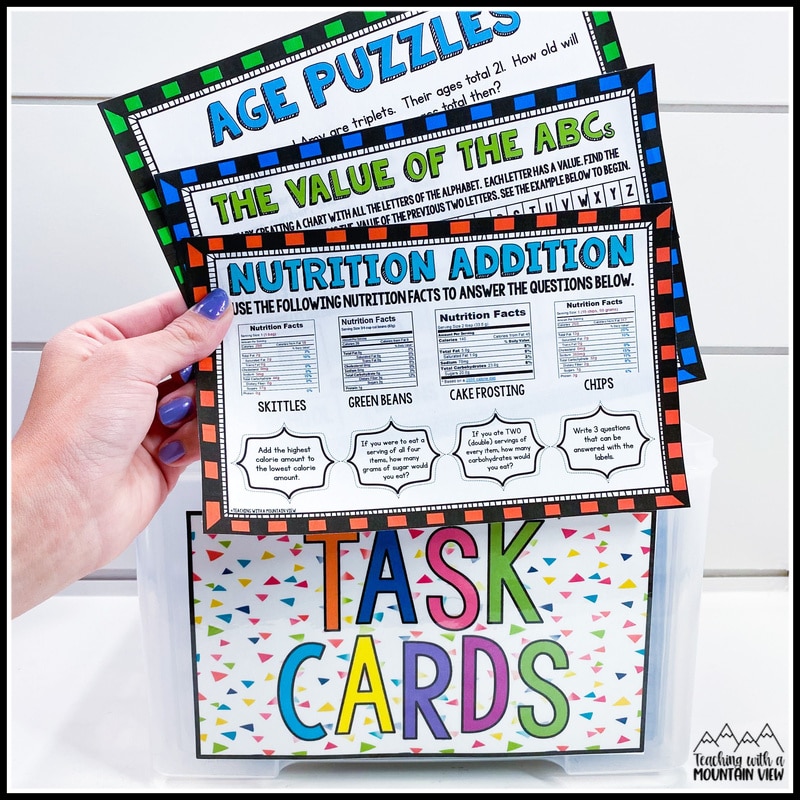
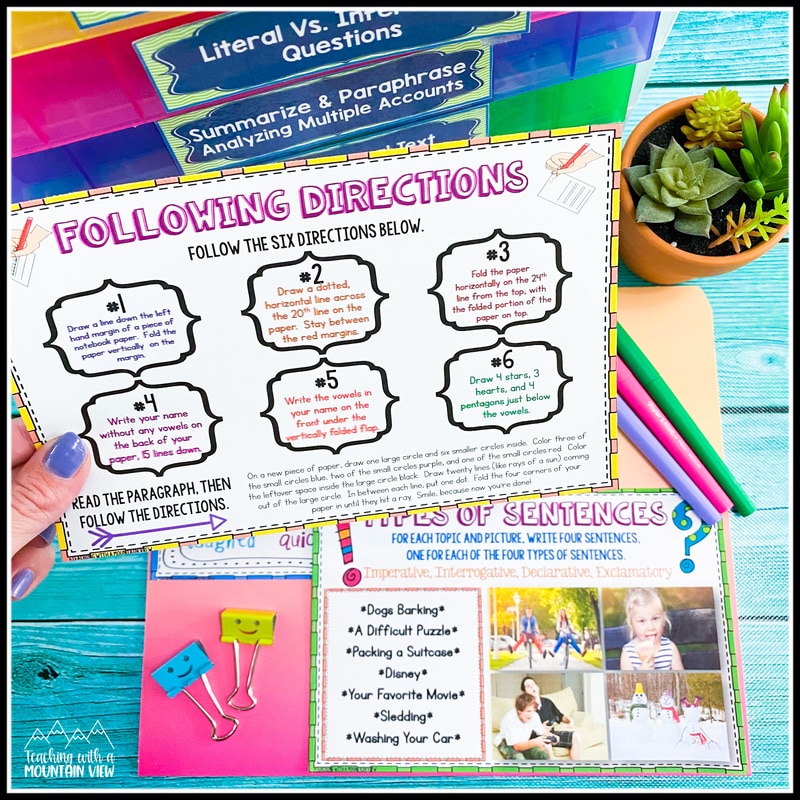
Brain Breaks
After working on reading for hours, our students need a break! They were dedicated to literacy skills for a big chunk of time. I highly recommend using an entertaining video or interactive video (like GoNoodle) to let students rest for a moment. I shared this post on my favorite brain break videos for some ideas.
Differentiation
Differentiation is key in stations. When we meet with our students during teacher groups, we definitely want to make sure we meet students where they are at. But, you also want to differentiate stations when possible. Consider the skill level (use all that lovely data you have!) of your students, the appropriate text they should be interacting with, etc. so that you can predict when students will either excel at or struggle with an assignment… then, you can provide a differentiated version that keeps everyone learning. This also helps with the management aspect as it keeps students from acting out or shutting down because a center feels overwhelming.
Here are a couple easy ideas for differentiation.
#1: A group of students who are still sharpening their comprehension skills may be focusing on the main idea. You may have them read short passages on task cards and determine the main idea of each passage. For a group that has shown proficiency with main idea but needs to stretch their thinking, consider having them read articles and rewrite titles for them. As an extra challenge, have them read four articles from the same main article, write all the subtitles and the main title as well! I have a great main idea activity that works well for this.
For a more advanced group, have them determine the difference between main idea and theme. Again, have them read a short passage on a task card and then determine both the theme and the main idea of each passage. Discuss how they are different.
#2: Another way you could differentiate is through synthesizing information. For struggling students, have them practicing summarizing information from a singular source. Then challenge them to evaluate and dig deeper into that source when they meet with you in a small group setting. Once students have mastered this, push them further with synthesis. In synthesis, students have to gather information from various sources and create a new understanding (a much more challenging skill!).
You can also have students work on entirely different skills in their rotations based on their unique needs. Remember that data I mentioned before? It can give you so much information about what your students need, and the more we use it, the more results we will see.
The task card center is perfect for this type of differentiation! Students can use the task cards the same way (in a board game, on a recording sheet, etc.), but use a different set of cards. This reading skills task card bundle or these advanced reading skills task card sets make this easy! One group might work on compare and contrast while another works on comparing texts.
Resources for Reading Centers
If you need some resources to get you started on literacy centers, here are my favorites to use.
Reading Skills Task Cards
These reading skills task cards make it super simple to spiral and review basic reading skills. I even use these in my teacher groups sometimes. There are eight different skills, from inferencing to sequencing to story elements.
Informational Text Structures
If you want your students to work on informational text structures, this is the perfect set of resources. It includes paired passages, games, projects, and more. By the end of these centers, your students will be text structure pros. You can get the text structure resource bundle here.
Reading Comprehension Task Cards
These task cards are perfect for stations because students can practice their skills on bit-sized passages. They will also practice both fiction and nonfiction skills. It includes four sets of task cards with hundreds of reading comprehension questions. Grab the reading comprehension task cards here.
More Literacy Center Tips For Upper Elementary
If you’re an intermediate teacher not currently using literacy centers, why not give them a try? Transitioning to this format of learning takes structure and clear expectations, but because many students have had experience with centers in the primary levels, they generally do well.
For more tips on structuring your literacy block, check out my other blog post where I go in detail about my daily literacy block.
Mary Montero
I’m so glad you are here. I’m a current gifted and talented teacher in a small town in Colorado, and I’ve been in education since 2009. My passion (other than my family and cookies) is for making teachers’ lives easier and classrooms more engaging.







